+ Back
+ Download article (PDF file l 311K)
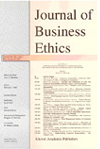 Managing the Brand in the New Stakeholder Environment
Managing the Brand in the New Stakeholder Environment
Journal of Business Ethics
2003 - NL
Elsie Maio
ABSTRACT. The corporate sustainability, and responsibility, movement has considerable implications for and impact on the discipline of brand management. It creates pressures to which the discipline must adjust, and new growth opportunities for it to enjoy. In Maio’s view, “brand” permeates all aspects of the corporation and therefore the values of the brand can serve as an effective touchstone for all corporate behaviours: in the Boardroom, in financial markets, in negotiations with employees, in customer interactions, in dialogue with other stakeholders. Moreover, most corporations already have “plumbing” in place (the organizational substructures and processes to manage their brand), that can serve as effective conduits for nurturing values-driven behaviours and measuring them.
I. Impact of the current “sustainability” movement
The corporate sustainability, and responsibility, movement has considerable implications for and impact on the discipline of brand management. It creates pressures to which the discipline must adjust, and new growth opportunities for it to enjoy.
Pressures
The prevailing approach to brand management is obsolete. Whirling currents of economic, political and social change have dramatically strained the contract between business and civil society. Society has raised its voice and is demanding that business take adequate responsibility for its impact on its stakeholders’ good. In a global marketplace, that stakeholder group embraces everyone.
Accordingly, the corporate brand mirrors strong, shifting public sentiments as never before. In the past, perceptions of a corporation’s behaviour and therefore, of its corporate brand had been managed easily enough. Highly integrated marketing communications and public affairs programs presented a consistent image of good citizenship: If a company issued the “right” type of documents, such as environmental reports, mission statements, and later, social-impact reports, and belonged to the “right” clubs, such as those that populate the responsible business category, it was given the benefit of the doubt. Let’s not forget Enron’s superb, values-laden mission statement.
But those times are over. At first, the internet communities of interest and information helped to cohere a civil voice around NGO-led advocacy on various issues. And vociferous public protests that began with the WTO demonstrations in Seattle three years ago accelerated the pressure for business’ greater accountability for global societal interests.
The nail in the coffin so to speak has come rather recently, through the past year’s scandals of broad corporate malfeasance. Trust is ruptured. The betrayal has transformed stakeholder complacency, most visibly, into wholesale retreat in the equities markets and the equivalent of consumer agoraphobia. More subtle effects, on employee productivity, morale, innovation and long term consumer confidence, have yet to be seen.
Even before the shock of September 11 terrorist attacks, and the corporate betrayals of public trust, the interests of “civil society” had begun to percolate more deeply in business affairs. For example, so called socially responsible investing grew almost twice as fast as the broad markets over the past ten years. Shareholder activism, more politely referred to as shareholder engagement outside the United States, has scored increasingly significant victories in persuading corporate management to adopt less offensive, more politically correct environmental and social practices. The European style of capitalism is being institutionalized in the EC charters and setting a standard for the impacts of business on society.
Stakeholders increasingly demand a voice, if not a place at the table. And it is the enlightened corporate leader who sees where this trend is going and turns it into a business advantage.
Opportunities
Opportunities abound:
– for the discipline to play a cogent role in the evolution of capitalism. By seeing the logical implications of corporate responsibility, and setting inspiring goals.
– for brand managers to accelerate the integration of ethics and values-based motivations in the culture.
– for brand managers to turn to advantage the increasingly porous nature of the brand.
II. Ethical branding for high performance: 8 guidelines
For purposes of being comprehensive, we will define corporate sustainability as including the operation of business in a manner that is consistent with ecological preservation, social welfare, and financial responsibility. So to be clear, rather than simply regarding corporate sustainability as sensitivity to the environmental impacts, prudent management of corporate activities as they impact ecological and environmental resources, we also include the notion of sustainability as sustaining of people, social welfare, and what we will refer to as a greater good.
So in this context the “corporate sustainability” initiative encourages the manager of the corporate brand to adjust in eight ways:
1. Take a real stand for matching the talk with the walk
The ground from which the corporate sustainability movement grew is one of scepticism and discontent with corporate behaviour. And not without reason. In fact, in addition to the broad scandals of corporate abuse symbolized by the Enron case, it could be argued that business had been given tacit permission to transcend the moral code. Even the patron of commerce, the god Mercury, is also the patron of thieves.
The antidote is authentic corporate responsibility and accountability. This mandate forces brand managers to take count of the corporation’s delivery on the promises they and their promotional activities make. So the brand manager is accountable for the corporation walking the talk that the marketing and communications disciplines historically craft and then promote.
Every successful professional in the field today has to some degree mastered the art of such calibration already. But too often we have seen firsthand, the marketing, communications and public relations functions being used as superficial bandages to mask operating problems. This practice hurts the credibility of the corporation, of the discipline, and the trust between the company and its constituents. And this practice can only continue so long as those professionals allow it to.
For the integrity of the profession, and their own personal integrity, communications and marketing professionals must take a stand in this difficult global transition toward rebuilding truth and trust between the corporation and its stakeholders. It may seem like a courageous stand to take, but in today’s eagle-eyed environment, there’s no place to hide anyway. The inevitable exposé of any falsehood would likely hurt the corporation much more than an uncomfortable truth in the context of an explanation would.
By the same token, understating the promise of the sustainable brand is tantamount to leaving money and market preference on the table. Why wouldn’t a corporation want its stakeholders to know the advantages of doing business with it?
This is another way in which the corporate sustainability movement is affecting brand management: it demands that we learn to calibrate accurately the promise and the reality of the benefits of enlightened corporate behaviour.

EXHIBIT 1. Illustrative only: Is the brand leading the way, or misleading? © Maio and Company, Inc., 2003.
2. Take the long, strategic view
Corporate sustainability initiatives automatically cast a longer term context on all disciplines and all corporate activities, including brand management. For example, one of the first screens for publicly traded companies who sought to be included in the Dow Jones Sustainability Group Index has been the length of their strategic planning horizon. Short term planning cycles are not consonant with sustainable corporate behaviour.
So too, in this context, brand management practices and the discipline itself must become more connected to the longer term strategic initiatives of the corporation and the evolving preferences of its stakeholders. Moreover, long term planning is the only responsible approach to managing an asset such as brand that can drive up to 70% of a company’s market capitalization.
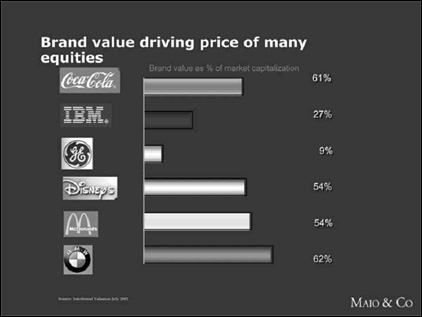
EXHIBIT 2. Brand driving price of some equities. © Maio and Company, Inc., 2003.
3. Sensitize over, under, sideways, down
Responsible corporate behaviour implies a sensitivity to the myriad ways in which the company’s actions affect its world. And today’s world embraces a broad group of stakeholders. So if a corporation is truly to embrace the objectives of corporate sustainability and its next phases, it will become a more careful listener to a much broader group of constituents. Indeed, even if the corporation seeks to manage reputation risk these days, it will enhance its listening skills. But the purer motives will emerge, and likely enhance the success of those who are authentically open.
This has immediate implications for brand management, which historically has been one of the sets of eyes and ears for the corporation in monitoring key stakeholders such as customers and investors.
Certainly, customers and investors were historically the prime “voters” with their cash for or withdrawal from the company’s products and equities. But the range of activist constituents has expanded dramatically in the globalizing world. As David Korten pointed out years ago, the commoditized world has reduced the margin for error in the global marketplace. Barriers to entry in key markets have dissolved with continual, eroding waves of access to capital, resources, technology and labor. The differentiator boils down to the responsiveness to stakeholders that comes from superior information on their evolving preferences for the “softer” aspects of delivery, access, and bundled services. The same forces that have helped to shift power to the customer and supplier, such as access to information via the internet, can be a source of advantage for the brand manager, too.
For example, internet access is as much a device for gathering information about stakeholders as it is a two-way relationship channel. Shell has pioneered in this regard, inviting open commentary and actually processing it through its internal systems into a dialogue device.
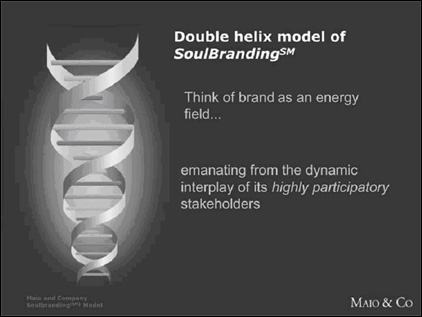
EXHIBIT 3. Double helix model of SoulBrandingSM © Maio and Company, Inc., 2003.
4. Build social value(s)
In addition to affecting branding processes and systems, the corporate responsibility movement is shaping the very content of brands.
Content takes many forms. There are positioning aspects that are unique to each brand and the corporation behind it. And then there are those that represent the bar of attributes and characteristics that every corporation must meet who would be respected and preferred among its various stakeholders at any given time. Because the corporate sustainability movement is raising that bar on the basic requirements of a trusted, responsible corporation, the movement itself is changing the content of brand positioning for all organizations.
It is this area that we refer to as the particularly social or “soulful” values component of brand positioning. That is to say that companies are expected to demonstrate a set of attributes in a more deliberate manner than they have recently in order to join the community of trusted corporations.
As a parenthetical reference, we have identified 13 of these values as comprising a set of essential attributes for the corporations today that would be embraced as members of a responsible corporate community. It is in this context that the words responsible and sustainable start to become inseparable. Responsible companies are not just participating in sustainable practices; responsible companies that have the trust of their stakeholders demonstrate attributes that go beyond what is sustainable. They include in addition, attributes and values that are “humane” or what we refer to as “soulful”.
For example, examine the pressures exerted by civil society, organized groups of self-described socially responsible investors, etc. They have rallied and pressured corporations to address, for example:
– inequity in pay scales, particularly between the CEO and median-level employees;
– transparency of operational performance;
– broad ecological impacts of their operations;
– broad social impacts of their operations on human rights and labor practices, especially those sourced in developing countries.
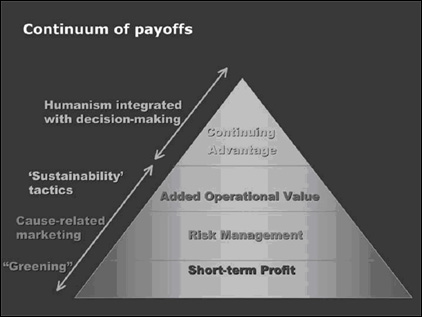
EXHIBIT 4. Humanistic values complement traditional emphasis on high performance.
© Maio and Company, Inc., 2003.
Quickly enough some of these pressures spawned “best practices” as a reply. These manifest in such cornerstones of best practice as: diversity programs; transparency initiatives and other efforts to share more performance data; environmental reports; social reports.
But such responses appear all too shallow when they are forced and not terribly distinctive. Patching up the vulnerable parts of an organization with a topical program is not the sign of an authentically integrated corporate citizen. Nor is philanthropy, per se, or so called “cause-related marketing.” And statements, reports are similarly suspect. In this regard, talk is cheap.
What’s missing for true credibility is consistent proof of authenticity. And that comes from an understanding of the motives behind the company’s response to pressures. And seeing those motives demonstrated in actions. Instead, the company authentically responding to civil society’s pressures for fundamental reform will demonstrate it through the consistent presence of a set of values in all its decision making. It is the hallmark of leadership positioning today.
Not only does this strengthen the trust bond, it helps the company anticipate the inevitable next wave of civil pressures.
In practical terms this suggests that the discipline of brand management become more integrated and interactive in relation to other disciplines in the corporation, specifically, strategic planning, human resources, investor relations, supply chain management, public affairs, public relations. Yesterday’s “stuff of brand management” – customer and employee intelligence – is necessary but no longer sufficient.
Monsanto’s being blindsided by U.K. ’s and Europe ’s reaction to its genetically engineered solution to world hunger is a case in point. Not having a 360 degree view of the corporation’s stakeholders is a result of a lag in brand management practice. It lagged the reality of the forces that had begun to drive brand preference, and even in this case, brand permission. So corporate sustainability which is in many ways an outgrowth of this new, empowered stakeholder community itself has perhaps the most interesting, deepest implication for brand management That is that the brand management discipline must open up and become a collaboration among stakeholders and the corporation. That is the fundament of a healthy brand going forward.

EXHIBIT 5. Continuum of payoffs. © Maio and Company, Inc., 2003.
New sub-disciplines must be cultivated and integrated into the psyche of the company as well as into the brand management practice. These include the management of stakeholder engagement, the constructive, collaborate solution development that inclusiveness of stakeholders can bring to the corporation.
5. Dance with more of the people, more of the time
The benefits transcend risk management. And those benefits tap into another phenomenon that is currently observed by experts and practitioners alike. That is the whole experience of complexity and complexity theory as a rich resource for business management. Indeed, the notion of inclusiveness as a strategic advantage is at the heart of stakeholder engagement.
For example an illustration was cited by one expert in managing stakeholder fora, John Hill, who also spoke at the Conference on Corporate Sustainability at Erasmus University last June. John has moderated dialogues among various corporate constituents and advocacy groups for a number of years, having started doing so for a power company in the U.K.
In this case, the company passed the first criteria for stakeholder engagement, that is to say, it was open and willing to listen. Management sat down in a facilitated forum with representatives of NGOs who admittedly had a gripe with its policies and practices. In the course of establishing where their common interest was and in building a productive discourse, one of the deliverables to emerge from these particular sets of interactions, was a positioning in fact for the brand. Now, this had not be targeted as a desired deliverable, but emerged as a bonus. It is not too surprising that creativity, and agreement, should multiply among a diverse group of people who sit down together to discuss their common interests and concerns.
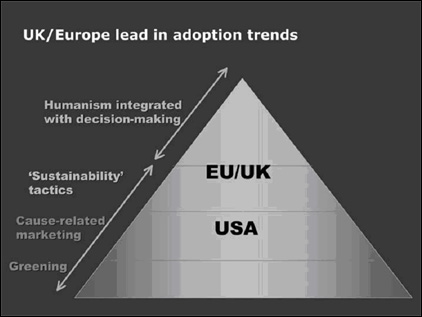
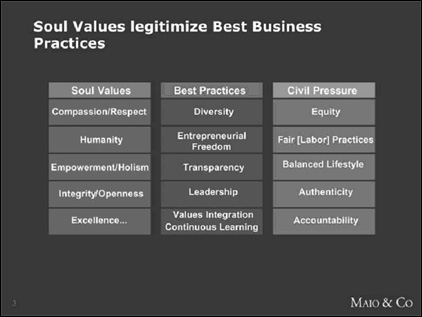
EXHIBIT 6. Human values legitimize best business practices. © Maio and Company, Inc., 2003.
The scientists talk about this as more robust solutions emerging from chaordic systems. Putting a point on it, one witty Santa Fe scientist, Norman Johnson, commented on the added robustness of solutions generated in diverse, chaordic systems; he titled a speech on the topic, “The Fall of the House of Experts”.
So we’ve talked about stakeholder engagement as a way to tap into a greater pool of creativity in developing solutions for brands, brand positioning, et cetera.
Another application of the more inclusive, stakeholder engagement approach, is the use of scenario planning frameworks to generate a fuller range of possibilities and a more carefully managed portfolio of strategies for risk management.
So in terms of another set of tools to complement stakeholder fora and structured dialogue, group planning exercises can adapt to the new requirements for brand management to be more inclusive, anticipatory and collectively creative, rather than expertly directive. The second major benefit of this more inclusive, genuinely interactive collaborative approach tends to be a natural buy in and support of participants, those actively engaged in the process, and those whom they represent.
6. “Kill the Buddha”
A spiritual teacher once told a story that demonstrated the need to set aside the “experts” and trust one’s self. “When you see the Buddha on the road,” he said, “you must kill him.” The lesson implied by this shocking vignette is that one must come to trust her inner self, above all others, even the highest, most revered teachers.
In the case at hand, “self ” is the set of engaged, earnest stakeholders. So another implication of the “corporate sustainability” movement is that the corporate brand manager becomes more of a facilitator, an orchestra leader, rather than a sage or expert. Here is an illustration. With great curiosity, our team closely examined the Shell 2000 Report, People, Planet, Profits. The authors of that document behaved like they were listening to only their and their constituents’ voices. They posited goals. They openly, it appeared, relayed their progress and lack of progress. They preserved the feedback they had invited the public to contribute on their refreshing, “Tell Shell” website.
The Maio and Company team deconstructed that Report and that of another, peer company, laboriously taking apart the content by subject area and laying it side by side to establish a more obvious comparison.
Shell had set the bar for itself much higher than its peer company had. The latter was using language and citing metrics that were in common, if not broad, usage at the time. Shell, on the other hand, was fresher in its reporting. It seemed to be following the thread of its own stated mission for sustainability and its stakeholders’ views as the criteria for its self-measurement. Shell seemed to be following the sound of its own drum, the organic interplay of its intention and the implicit expectations of its constituents. It did not pretend to have the answers to many of the complex issues. But earnestly engaged in understanding them better. The sense of authenticity and professional excellence rang out as clearly as a bell. If there was jargon, it was explained. The sense of an earnest, even heartfelt effort was apparent throughout. It gave a superior impression of collaboration and mutual respect. It suggested a company of people sensitive to their role in the world.
7. Know, and heal, thyself
Perhaps the seventh implication of “corporate sustainability” for the discipline of brand management is that it helps build an authentic, values-driven culture. Shall we all agree that branding – the process of building preference for a unique set of characteristics associated with a unique set of identifying symbology – is as powerful a tool inside the company as outside it? Then, the responsibility of the brand manager is as strong among the employee and close-in external stakeholders as among customers.
A few months after he took office as CEO of General Electric, Jeffrey Immelt was interviewed by Business Week. This was right after the first wave of the Enron scandal; GE’s impropriety in “managing” earnings had not yet come under the harsh scrutiny of the public eye.
So Jeffrey Immelt was simply being interviewed as a new CEO in a new regime in a new world: post 9/11, post Enron revelations. And in a rather prescient way, Mr. Immelt said in BusinessWeek, “I’m confident that integrity informs the corporate level, what keeps me up at night is the extent to which integrity informs decision making at the further reaches of the organization.”
It was ironic he should put it that way. Shortly after he did, it was revealed that at the corporate level, GE in fact had been engaged in a process, known as “earnings smoothing”. To be fair, this reporting tactic was not uncommon. It amounts to borrowing earnings gains from one business and attributing them to another to create the impression of less volatility, greater predictability and steady progress in corporate performance overall.
But if it was not illegal, it was misleading. And here is the primary role of the brand in establishing the standards for behaviour: not in rules and regulations, but in the spirit that drives ethical decision making throughout the organization.
In fact, the very processes of managing the brand provide a perfect opportunity for the corporation to monitor and help nurture those same values. One example is through a tool that we’ve developed called the SoulBrandSM Audit. It helps executive management diagnose the sustainable values profile of its employees and other closein stakeholders. Because it is a self-audit for a full range of employees, the process itself is inclusive and draws on the richness that complex systems can yield. In our work to date, the Self-Audit has quickly pointed out where companies are vulnerable, stable and strong. And it provides a blueprint of the actions that employees would associate with improvements.
Knowing where the internal stakeholders see the company and where they would like to see the company on the scale of social values, is a healthy starting point. Knowing how to move up the scale where it matters to them is the blueprint for strategic priorities.
Most organizations today include periodic sampling of corporate image; the SoulBrandSM Audit module attaches quickly to such existing systems. Reciprocal flow of internal/external engagement in the SoulBranding SM Framework sets a rhythm for more predictable, innovative business outcomes.
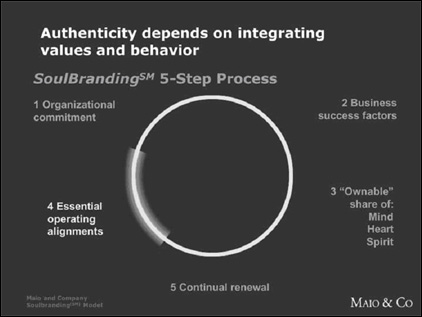
EXHIBIT 7. Authenticity depends on integrating values and behaviour. © Maio and Company, Inc., 2003.
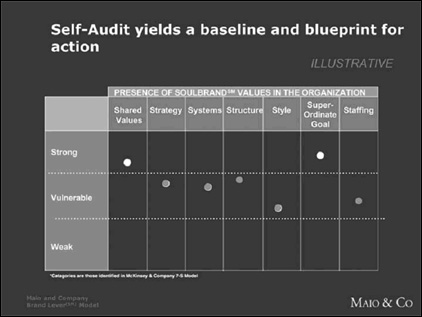
EXHIBIT 8. Self-Audit yields a baseline and blueprint. © Maio and Company, Inc., 2003.
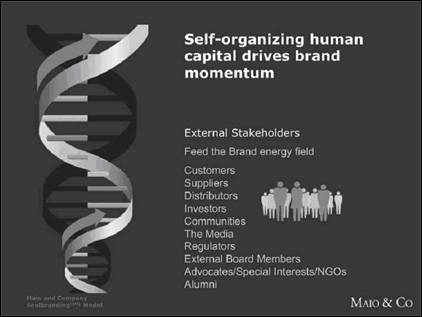
EXHIBIT 9. The double helix of brand management. © Maio and Company, Inc., 2003.
8. The brand is porous: manage osmosis
The shift in power from corporation to stakeholder has come with a thud, accelerated by ecommerce and internet activism. As a result, the brand is more than ever, a constantly shifting asset. And it is in many ways co-owned by the corporation and its stakeholders. Each body nurtures it, responds to each other through it (the corporation by fine-tuning it to evolving stakeholder preferences and corporate constraints; other stakeholders by according it more or less preference, loyalty, permission and premium pricing). The recent problems that the Martha Stewart-branded products have endured are an example of stakeholders turning away from a product brand tarnished by the reputation of its eponymous source.
So whereas historically we brand managers were content to sample audiences periodically, remotely, if you will; now we must participate with them interactively, collaboratively, almost continually. Likewise, before we had done our job by laying out sound plans for positioning a brand and turning them over to creative implementers. Today, we must ensure the appropriate alignment of suppliers with our own corporate values and ethics. Today, managing a brand is more like dancing the tango while leading the orchestra. The only way to succeed is to be sure the orchestra is so well prepared that they play almost from body memory, from a cellular harmony with the core values. The tango with external stakeholders will demand almost all your attention and skill.
We’ve come to think of it as managing two strands of DNA, continually spiraling around each other at the length of horizontal bars of procedures and practices and structured interactions with stakeholders. As the double helix revolves, the energy field it creates is the brand aura, or halo.
In today’s highly relationship-driven world, the brand is a dynamic, vital, living entity, fed by the interaction among its myriad stakeholders. The brand manager’s task is to set up solid frameworks for interaction and let go enough so the brand can absorb through osmosis the evolving requirements and rich insights of its constituents. All this in the framework of a deep set of values that guide its social and economic performance.
Acknowledgements
Research support Jeannette Tanguay; Interbrand Annual Survey; graphics Alisha Lehman; inspiration Mary Azzarto Ciampa, McKinsey & Co., fe-losophy.com, Xander Meijer; context Cliff Feigenbaum, Robert Rubenstein, Marcel van Marrewijk.
Maio and Company, Inc., U.S.A.
E-mail: elsiemaio.soulbranding.com
+ Download article (PDF file l 311K)


